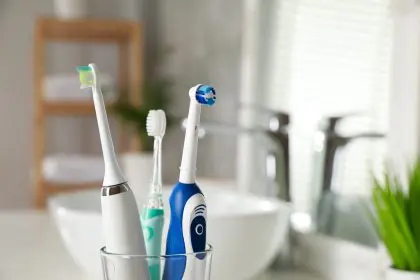An emerging trend promoting specialized chewing gums for jawline enhancement has captured widespread attention, particularly among young adults seeking facial definition. This phenomenon gained momentum through social media platforms where various products claim to sculpt and define jaw muscles through rigorous chewing exercises. The market for these specialized gums has expanded significantly, with global sales reaching millions annually as consumers pursue aesthetic improvements through this purported non-invasive method.
Understanding the science
The concept behind jawline enhancement gums centers on the masseter muscles which control chewing movements. These muscles, among the strongest in the human body, work in conjunction with the temporalis and pterygoid muscles to enable complex jaw movements. Specialized gums marketed as fitness tools contain denser materials than regular chewing gum, requiring up to five times more force to manipulate. This increased resistance supposedly triggers muscle hypertrophy, similar to weight training for other body parts.
Research from dental institutions reveals no scientific evidence supporting claims that chewing gum can alter facial structure or create permanent changes in jawline appearance. The jaw’s appearance depends primarily on bone structure, genetic factors, and overall body composition. While chewing activities may temporarily engage facial muscles, this engagement does not translate to lasting structural changes in bone or muscle composition. Studies examining muscle adaptation to chewing resistance show minimal impact on actual facial contours.
Anatomical considerations
The human jaw comprises a complex system of bones, muscles, and joints working in precise coordination. The temporomandibular joint (TMJ) connects the jawbone to the skull through a sophisticated network of ligaments and muscles. This joint’s primary function focuses on essential activities like eating and speaking, not aesthetic enhancement. Attempts to modify its appearance through excessive exercise often disrupt this delicate balance.
Prolonged vigorous chewing creates excessive pressure on dental work including fillings, crowns, and bridges. The average human bite force ranges from 120-170 pounds per square inch. Enhancement gums often require forces exceeding these normal limits, potentially compromising dental restorations and natural tooth structure. The resulting strain can accelerate wear on tooth enamel, leading to increased sensitivity and vulnerability to decay.
Muscle mechanics explored
Facial muscle anatomy reveals why targeted exercises through gum chewing prove ineffective for aesthetic enhancement. The masseter muscle’s development responds primarily to genetic factors and natural growth patterns rather than exercise stimulation. Unlike skeletal muscles in arms or legs, facial muscles have unique fiber compositions optimized for endurance rather than bulk development.
Medical professionals emphasize more effective science-backed approaches to jawline enhancement. These methods include maintaining proper nutrition, healthy body weight, and when appropriate, consulting qualified healthcare providers about professional cosmetic procedures. Proven treatments exist for those seeking jawline definition, ranging from non-invasive options to surgical interventions, all with documented safety profiles and predictable outcomes.
Global trends and implications
The pursuit of jawline enhancement through gum chewing represents a worldwide phenomenon affecting diverse populations. Market research indicates particularly strong adoption among young adults aged 18-34, with social media serving as the primary driver of this trend. Regional variations in product formulation and marketing claims complicate efforts to establish universal safety guidelines.
Medical research identifies numerous risks associated with excessive jaw exercise through specialized gums. Beyond immediate concerns about dental damage, long-term complications can include chronic pain syndromes, difficulty speaking or eating, and permanent changes to jaw joint function. The cumulative stress on facial structures may accelerate aging processes and create asymmetrical muscle development.
Prevention and education
Healthcare providers emphasize preventive strategies to maintain oral health and natural facial aesthetics. This includes proper dental hygiene practices, regular professional examinations, and early intervention for any developing issues. Education about facial growth patterns and aging processes helps individuals make informed decisions about aesthetic enhancement methods.
Ongoing studies examine the relationship between chewing patterns and oral health, focusing on identifying safe limits for jaw muscle exercise. Research also investigates alternative approaches to facial aesthetic enhancement, emphasizing evidence-based methods that preserve long-term health. This scientific work continues revealing new insights into facial muscle function and development.
Demographic impacts
Different age groups show varying susceptibility to jawline enhancement marketing. Adolescents and young adults demonstrate particular vulnerability to social media influence regarding facial appearance. Understanding these demographic patterns helps healthcare providers develop targeted educational interventions and appropriate treatment recommendations.
Extended use of enhancement gums may lead to cumulative health effects beyond immediate dental concerns. Changes in chewing patterns can affect digestion, speech, and overall facial muscle balance. The relationship between excessive jaw exercise and accelerated joint wear continues under investigation by medical researchers.
Professional guidance
Dental and medical professionals stress the importance of seeking qualified advice before pursuing any facial modification method. This guidance includes comprehensive evaluation of existing oral health, consideration of individual anatomical factors, and discussion of evidence-based enhancement options when appropriate.
The examination of jawline enhancement trends reveals complex interactions between social media influence, consumer behavior, and health outcomes. While aesthetic goals remain valid, pursuing them through unproven methods risks compromising long-term wellbeing. Healthcare providers continue advocating for science-based approaches to facial aesthetics, emphasizing the preservation of natural function and health over temporary cosmetic changes.
















